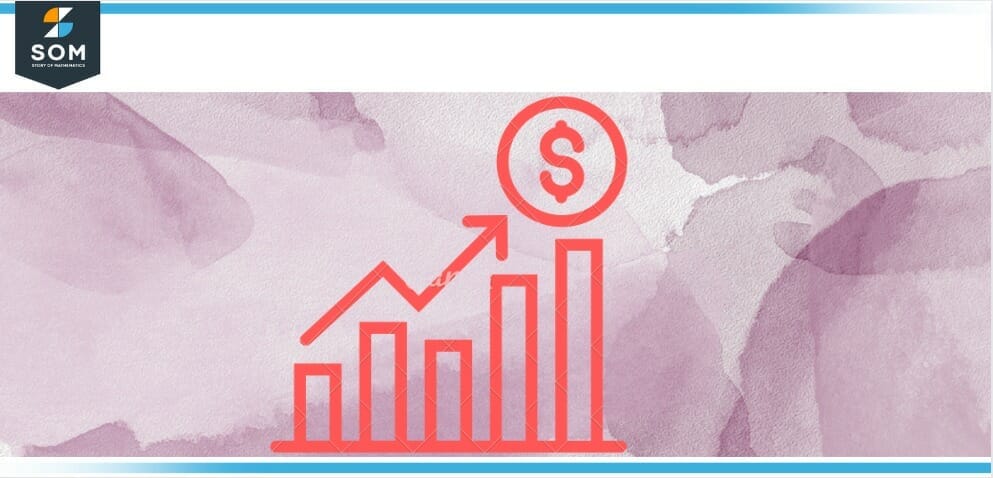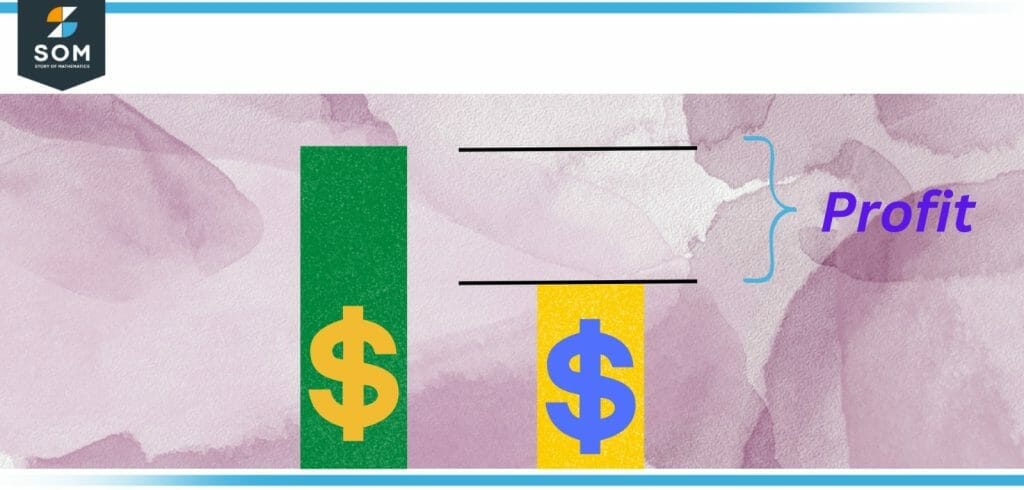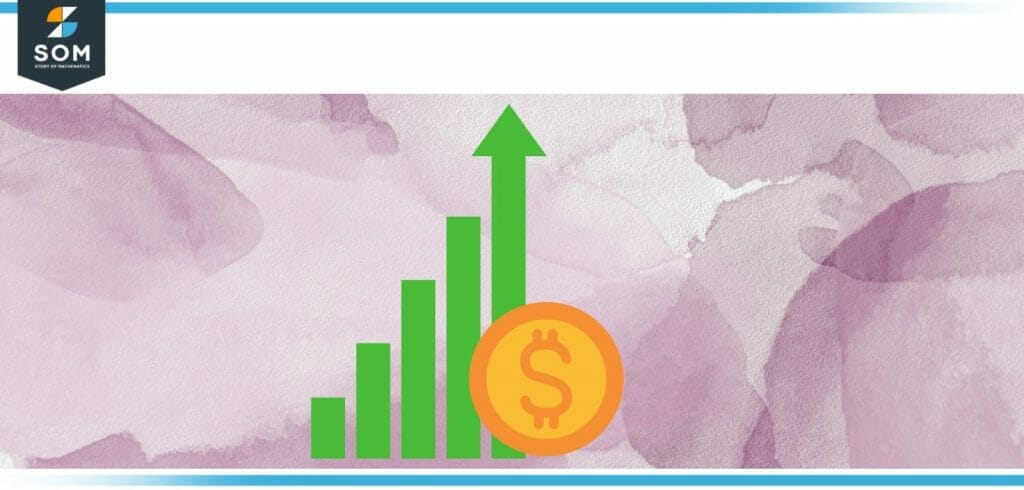JUMP TO TOPIC
Profit|Definition & Meaning
Definition
The net positive income after subtracting all expenses. If the subtraction results in a negative number, it is called “loss” instead. For example, if a store sells \$5000 worth of clothes in August, and the month’s expenses totaled \$3000, the store earned a net profit of \$5000 – \$3000 = \$2000.
In mathematics, the gain from any business operation is referred to as profit.
Every time a merchant sells a product, his goal is to make a profit by getting something from the customer. In other words, if he sells the goods for more than the cost price, he makes a profit; yet, if he needs to sell them for less, he loses money.

Figure 1 – Profit in business
What Is the Meaning of Profit?
The amount that is acquired from the sale of a product is considered to be the profit, and this amount should be greater than the price at which the product was purchased. It refers to the quantity of money gained from engaging in any form of commercial activity.
In a nutshell, a gain or profit is thought of as existing when the difference between the selling price (SP) of a product and its cost price (CP) is greater than zero.
It is used to represent the financial benefit that is achieved if the revenue obtained from the business activity is more than the taxes, expenses, and other costs that are associated with maintaining business activities.

Figure 2 – Profit visualization
Profit Formula
When discussed in relation to the cost price and the selling price, profit is more understood. The cost price of a product or commodity is the real price of the item, whereas the selling price is the amount at which the item is sold to customers.
Therefore, if the price that the good is being sold for is higher than the amount that it was purchased for, then the company has made a profit. Consequently, the formula to determine the profit is as follows:
Gain or profit equals the selling price minus the purchase price
However, this transaction is considered a loss whenever the product is sold at a lower price than the cost price. Therefore:
Loss is Purchase Price minus Final Sale Price

Figure 3 – Profit in dollars
Profit Percent
When the profit is determined, using the following method, we can also determine the percentage profit we have earned in any firm;
Percentage = (P/CP) × 100
where P stands for profit and CP for cost.
Types of Profit
In business, three different types of profit are utilized. Operating profit, net profit, and gross profit
Gross Income
The amount made by any firm or company after deducting the costs involved in producing and selling the product from the selling price is known as gross profit.
The costs required to create the product or give any service to the customers should be subtracted from the revenue yielded in the company’s income after sales of the commodity in order to obtain the gross percentage of the profit.
The following formula is used to determine gross profit:
Total Sales – COGs = Gross Profit
Here, the cost of goods sold is represented by COGs.
Operating Income
The operating profit of a corporation reveals how much its operations contribute to its profitability. The ratio of the operating income to the sales revenue is essentially the operating profit. The operating profit calculation formula is as follows:
gross profit – operating expenses = operating profit
Additionally, operating profit margin equals operating profit divided by total sales net profit.
The total cost amount that the business generated as revenue is included in the net profit. It indicates the actual revenue that each company generates. The following is the formula to determine net profit:
operating profit – taxes, interest, and other deductions = net profit
Businesses use a profit margin to assess all 3 kinds of profit.
In this situation, the return is divided by the profit, whether it be gross, operational, or net. It demonstrates how effectively the company utilizes its profits. If the ratio is high, it signifies that each revenue generates a sizable profit. A low ratio indicates that the company’s expenses are eating into its profits. The ratios differ with each deal.
Why It’s Critical To Understand Business Profit
Calculating profits offers a lot of strategic insight in addition to letting you know how much is left over after expenses are subtracted. It improves planning and decision-making as a result.
A Sign of a Business’s Financial Health
One of the biggest errors that business owners make is assuming that a lot of sales indicate a successful operation. You can be making money, but you might also be losing it somewhere else. Your company might, for instance, have a healthy gross profit margin. You might think you’re really successful as a result of this.
You can discover that the running expenses are excessive after calculating operational profit. Calculating the many sorts of profit is crucial as a result. As a result, you will have a precise understanding of the state of the business. You can also identify areas where you can make improvements to boost profitability.
More Precise and Straightforward Budgeting
You will have expenses for any certain financial period. It’s crucial to make a budget for that time period in order to keep such expenses within reach. The majority of the time, that budget will take estimates for the upcoming period as well as revenues that you roll over from the prior one into account.
It’s likely that you’ll have a budget deficit if your earnings predictions turn out to be inaccurate. This could cause some of the company’s projects to fall through, reducing revenue and profit even further.
Budgeting will be considerably simpler if you have an accurate picture of the sales and earnings you can anticipate. As a result, there is a significant reduction in the danger of such budget deficits.
More Prospects for Investment
In order to scale, investments must rise. You must be strategic in order to find the greatest investing opportunities and profit from them. Knowing how much money you can set aside for such investments and when is a crucial component of this.
You will gain a better understanding of how much you may dedicate to investments as you calculate profit using the various formulas. Then, you’ll be able to concentrate on investments that meet your capabilities, enabling you to evaluate them more thoroughly and select the finest one.
Enhanced Business Expansion
The benefits of calculating different profit margins are numerous. These advantages work together to maximize your company’s success. You will be able to maximize the use of your available resources by receiving assistance in optimizing business operations and improving planning.
These can then be used to make strategic investments, which will encourage further growth.
A Numerical Example of Profit
If an apple is sold by a shopkeeper at a price of Rs. 200 per kg, the price at which it was purchased was Rs 150. The next step is to calculate the amount of profit that the shop owner made.
Solution
Given that:
The cost price is 150 while the selling price is 200. We know that:
Profit = Selling price – Cost price
By putting values, we get:
Profit = 200 – 150
Profit = 50
Therefore, the owner of the shop makes fifty rupees from the business.
All mathematical drawings and images were created with GeoGebra.
